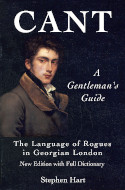PRINCE'S CLUB RACQUET COURTS
In the early history of the metropolis we find the Londoners warmly attached to outdoor sports and pastimes; although time and the spread of the great city have long obliterated the sites upon which these popular amusements were enjoyed. Smithfield, we know, was the town-green for centuries before it became the focus of its fanatic fires; Maypoles stood in various parts of the City and suburbs, as kept in remembrance by name to this day; football was played in the main artery of the town—Fleet-street and the Strand, for instance; paille malle was played in St. James's Park, and the street which is named after the game; and tennis and other games at ball were enjoyed on open grounds long before they were played in covered courts; while the bowling-greens in the environs were neither few nor far between, almost to our time.
Tennis, we need scarcely state here, was originally played with the hand, at first naked, then covered with a thick glove, to which succeeded the bat or racquet, whence the present name of the game. A few of our kings have been tennis-players. In the sixteenth century tennis courts were common in England, being attached to country mansions. Later, playing-courts were opened in the metropolis: for example, to the houses of entertainment which formerly stood at the opposite angles of Windmill-street and the Haymarket were attached tennis-courts, which lasted to our time: one of these courts exists in James-street, Haymarket, to this day. To stroll out from the heated and crowded streets of the town to the village was a fashion of the last century, as we read in the well-remembered line—
"Some dukes at Marybone bowl time away."
Taking into account the vast growth of the metropolis, we are not surprised at so luxurious a means of healthful enjoyment as a racquet court presents being added to the establishments or institutions of this very clubbable age. Hitherto Clubs had been mostly appropriated to the purposes of refection; but why should not the social refinement be extended to the enjoyment of so health-giving sport and manly a pastime as racquet? The experiment was made, and with perfect success, immediately upon the confines of one of the most recent settlements of fashion—Belgravia. It is private property, and bears the name of "Prince's Club Racquet Courts."
The Club, established in 1854, is built upon the Pavilion estate, in the rear of the north side of Sloane-street, the principal entrance being from Hans-place. The grounds are of considerable extent, and were originally laid out by Capability Brown. They were almost environed with lofty timber-trees; and the genius of landscape gardening, fostered by wealth, rendered this glade in the Brompton groves of old a sort of rural elysium.
The Pavilion estate was once the property of Holland, the well-known architect, who planned Sloane-street and Hans-place, as a building speculation; and, in the grounds nearly between them, built himself what was then considered a handsome villa, the front of which was originally designed by Holland as a model for the Prince of Wales's Pavilion at Brighton; hence the name, the Pavilion estate. In the grounds, among the remains of Brown's ornamental work, was an icehouse, amidst the imitative ruins of a priory. Here, also, were the Ionic columns (isolated) which were formerly in the screen of Carlton House.
The Club buildings comprise seven closed courts; a tennis court; gallery and refreshment rooms; baths, and a Turkish bath.
Prince's Club is a subscription establishment; and its government is vested in a committee. Gentlemen desirous of becoming members of the Club must be proposed and seconded by two of its members. Two of the rules enact—that members have the privilege of introducing two friends, but that such visitors, if they play, be charged double the rate charged to members; and that no hazard, dice, or game of chance be allowed in this Club. Their Royal Highnesses the Prince of Wales and the Duke of Cambridge are members.
John Timbs
Club Life of London Vol. I
London, 1866

